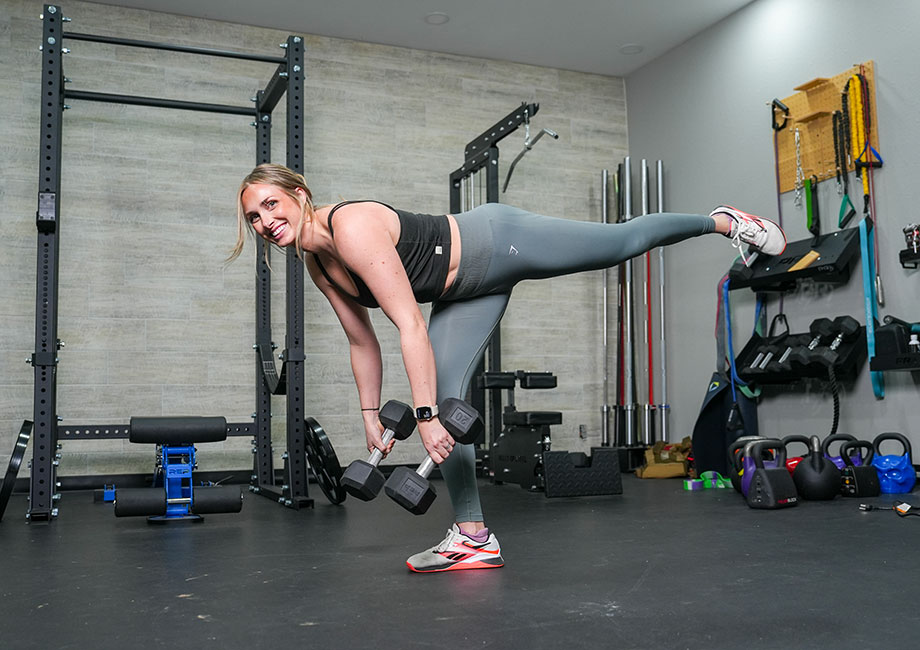We test and review fitness products based on an independent, multi-point methodology. If you use our links to purchase something, we may earn a commission. Read our disclosures.
You read that right; the single-leg deadlift involves performing the tried-and-true strength training classic with only one leg planted on the floor. Converting this classic lift into a unilateral exercise is no gimmick; it’s one of the best and most underutilized deadlift variations.
“The single-leg deadlift offers a balance challenge you can’t get from the standard bilateral version,” says Kate Meier, NASM-CPT, USAW-L1, CF-L1, and GGR director of content.
Our guide covers how to do a single-leg deadlift the right way, top trainer tips for proper form, common mistakes you should avoid, and so much more! Check it out below!
How To Do the Single-Leg Deadlift
If you understand how to deadlift correctly, you’ll find the movement pattern fairly familiar, minus the fact you’re now balancing on one leg. You can do the single-leg deadlift using free weights, including barbells, dumbbells, and kettlebells, but our guide will focus on the barbell version.
How to do it:
- Place a barbell on the floor and load it to your desired weight.
- Stand behind your barbell with your lead foot positioned behind the bar’s center.
- Step back with your other foot, lightly touching the floor with your toes.
- Hinge forward by pushing your hips back, bringing your torso down, and bending your front knee so you can grip the barbell with a double overhand grip. Let your back leg float up behind you as you move.
- Drive through your front heel and extend your front knee to stand.
- Continue until your hips are at full extension, squeezing your glutes at the top.
- Reverse the movement to return to the starting position.
- Repeat for reps, then switch sides and repeat the set.
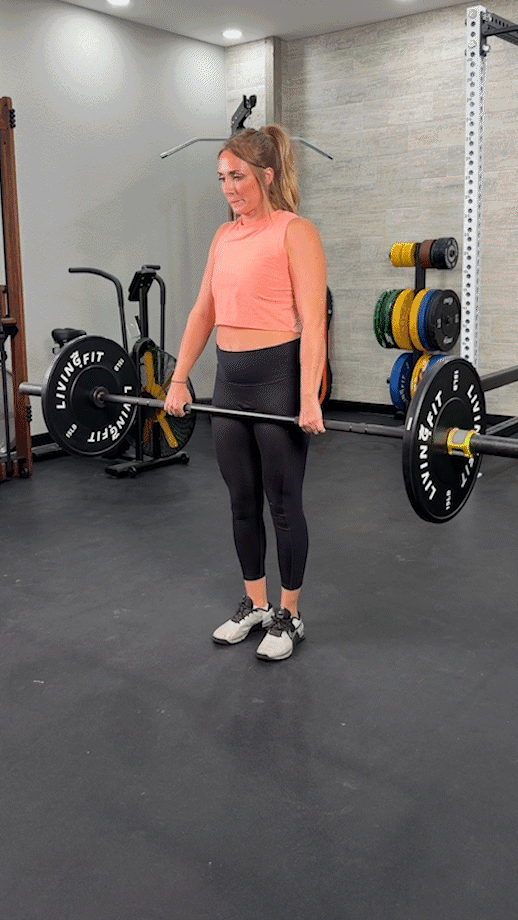
How To Do the Single-Leg Deadlift At Home
Doing single-leg deadlifts in the gym is simple since all you need is your choice of free weight and a conservative section of floor space, but not everyone has the same luxuries at home.
Home and garage gym owners can easily incorporate the movement into their routine by investing in a pair of dumbbells or a budget barbell. You don’t technically need official weights, however, to get the job done.
You can use a resistance band or get creative by subbing in heavy household items. A full laundry basket, two jugs of detergent, and more make viable options in a pinch.
RELATED: Best Resistance Bands
How To Program the Single-Leg Deadlift
There are many ways to work this unilateral exercise into your routine. The number of sets, rep scheme, and loading pattern will depend entirely on your goals:
- For strength: Aim for 3 to 5 sets of 5 reps using heavy weights.
- To build muscle: Perform 3 to 5 sets of 8 to 12 reps using moderate weights.
- To improve balance: Incorporate 2 to 3 sets of 12 to 20 reps using light weights into your regular lifting routine.
“If you want to work on your balance and coordination, high reps using light weights is optimal, but so is cadence,” says Kate Meier, NASM-CPT, USAW-L1, CF-L1. “Do your reps at a consistent tempo, moving fluidly and minimizing the amount of time spent standing and shaking. If you’re having trouble, try using less weight or consider a modification.”
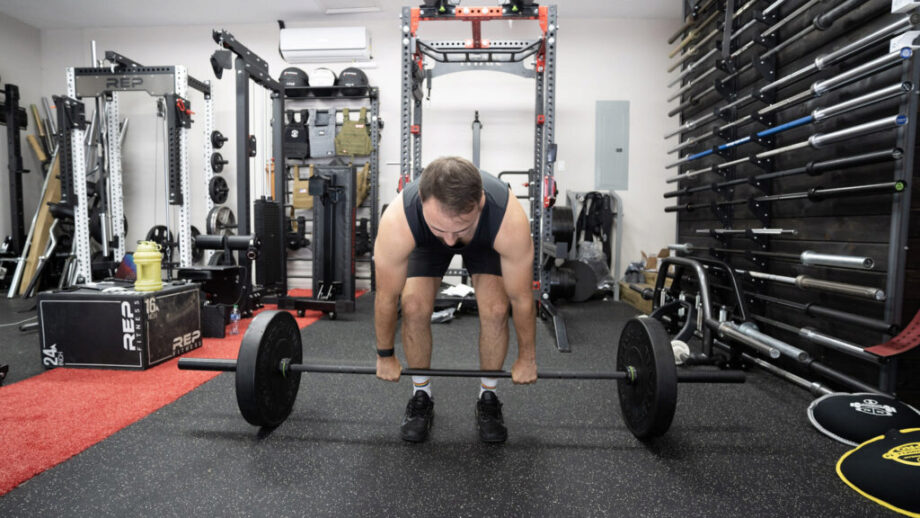
RELATED: How Many Reps to Build Muscle
Modifications and Progressions
The single-leg deadlift is one of the best exercises for building unilateral strength and muscle in your lower body, but it can be tough for beginners to find their footing.
“If you’re having trouble with the single-leg deadlift, consider a split stance deadlift,” says Kate. “Positioning one leg in front of the other simulates the loading demand of a single-leg deadlift, but your back leg stays touching the floor to assist.”
RELATED: Lower-Body Workouts
Likewise, you may feel ready to graduate from standard single-leg deadlift.
“To progress, you have options,” says Kate. “If sheer strength and size are your goals, going back to the traditional deadlift and pushing your limits is a viable option. To increase unilateral strength, on the other hand, you can perform a one-handed single-leg deadlift.”
You’ll need a single dumbbell or kettlebell to do the one-handed single-leg deadlift. The movement pattern is virtually identical to the standard two-handed version, but note that you’ll hold the weight in the hand opposite your working leg.
RELATED: Best Dumbbells
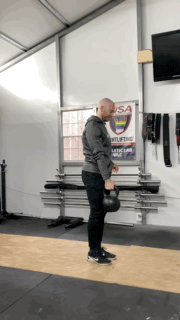
Single-Leg Deadlift Variations
Our step-by-step instructions above involve the single-leg barbell deadlift, but there’s no reason you can’t swap out the bar for another free weight.
- Kettlebell single-leg deadlift: You can perform the single-leg deadlift using a single kettlebell held with two hands or two kettlebells held at your sides using a neutral grip.
- Dumbbell single-leg deadlift: Likewise, you can use a pair of dumbbells held at your sides using a neutral grip to do the single-leg deadlift.
RELATED: Best Kettlebells
“The barbell version is great for correcting lower body muscle imbalances,” adds Kate, “but can’t do much for upper-body bilateral deficits. Using two dumbbells or kettlebells, on the other hand, tasks each arm with contributing equally, making them useful for even growth and development.”
Single-Leg Deadlift Alternatives
The SLDL isn’t the only exercise that provides a unilateral stimulus to your lower-body muscles. Check out our list of single-leg deadlift alternatives for a little fitspiration!
Single-Leg Romanian Deadlift (Two-Dumbbell Version)
Why do it: According to Medicine and Science in Sports and Exercise1, the single-leg RDL is one of the best hip hinge exercises for building posterior chain muscles, including the lower back, glutes, and hamstrings.
How to do it:
- Hold a pair of dumbbells in front of you using an overhand grip.
- Hinge forward from your hips letting one leg float upwards behind you as you move.
- Continue until you feel a strong stretch in your working hamstring.
- Push through your heel to return to a standing position.
- Repeat as needed, then switch sides and repeat the set.
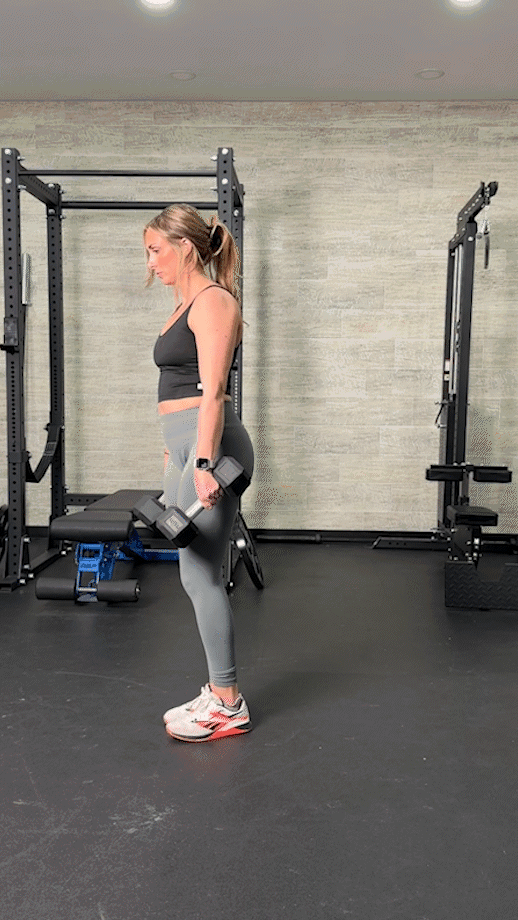
Split-Stance RDL
Why do it: Want to nab the benefits of the single-leg RDL without actually balancing on one leg? The split-stance Romanian deadlift provides similar, albeit less, muscle activation to the same muscles, making it a great alternative or modification to the single-leg version.
How to do it:
- Get into the same starting position as the standard single-leg RDL.
- Step backward with one leg, placing your toes and the ball of your foot on the floor.
- Hinge forward, keeping your weight mostly on the heel of your front foot with some distributed to your back foot for support.
- Continue until you feel a stretch in your working hamstring.
- Push through your front heel to return to a standing position.
- Repeat as needed, then switch sides and repeat the set.
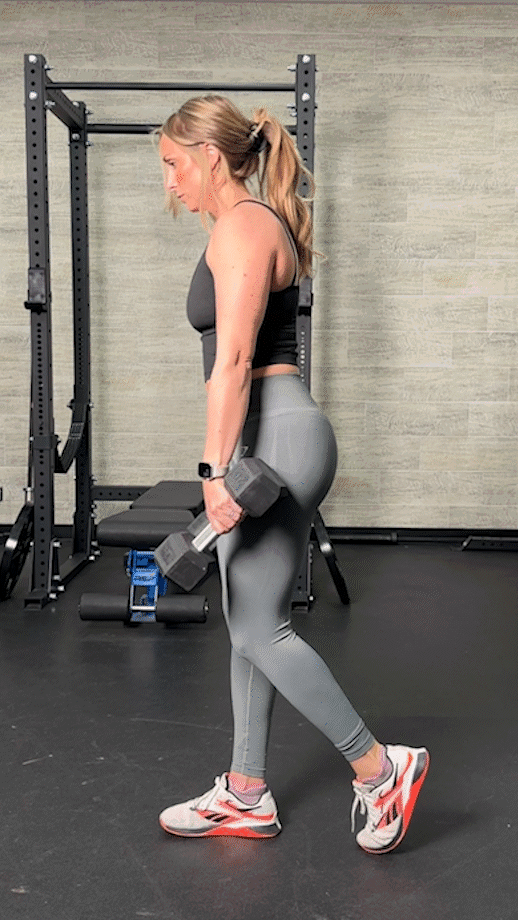
Single-Leg Hip Thrust
Why do it: “The single-leg hip thrust targets the same muscles as the single-leg deadlift, but you don’t need as much balance and coordination to pull it off,” says Kate Meier, NASM-CPT, USAW-L1, CF-L1. “They’re also easier on your lumbar spine, making them ideal for those with low back pain.”
How to do it:
- Sit on the floor with your upper back and shoulders resting against a weight bench.
- Bend your left knee, keeping your left foot planted, and lift your right leg into the air.
- Push through your left foot and thrust your hips upward.
- Squeeze your glutes, then lower yourself back down with control.
- Complete all repetitions, then switch sides and repeat the set.
RELATED: Hip Thrust Workout
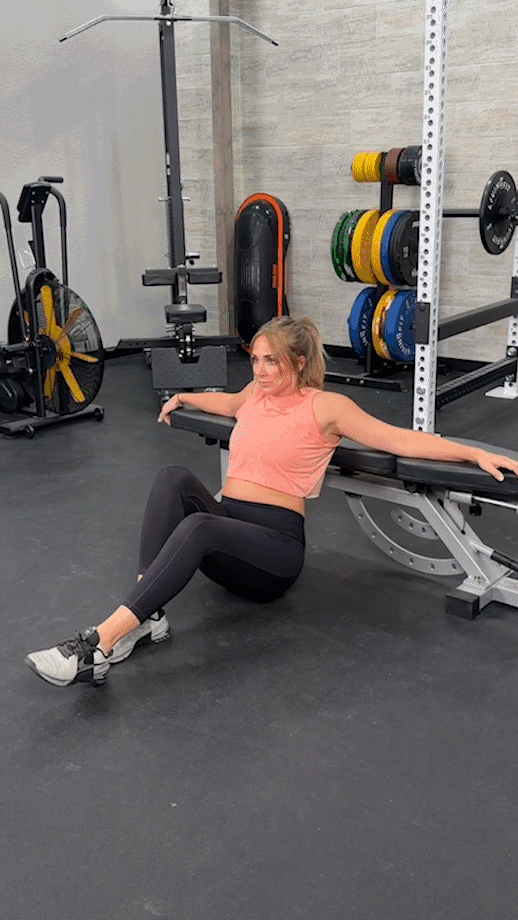
Benefits of the Single-Leg Deadlift
Regularly performing the single-leg deadlift yields attractive benefits to your strength, size, and endurance, but what else can you expect from adding this unilateral exercise into your routine?
Produces Incredible Muscle Activation
We’d never disparage the classic deadlift (love you, boo); however, most lifters are surprised to hear that, according to the International Journal of Exercise Science2, the single-leg deadlift is superior at activating the biceps femoris (hamstring) and gluteus medius.
The result is a stronger posterior chain, contributing to improved biomechanics, enhanced sports performance, and easier completion of everyday living tasks (aka functional fitness).
Improves Balance and Coordination
According to Perceptual and Motor Skills3, single-leg training significantly increases balance control. That’s great on the playing field but even more important in everyday life, especially as we age.
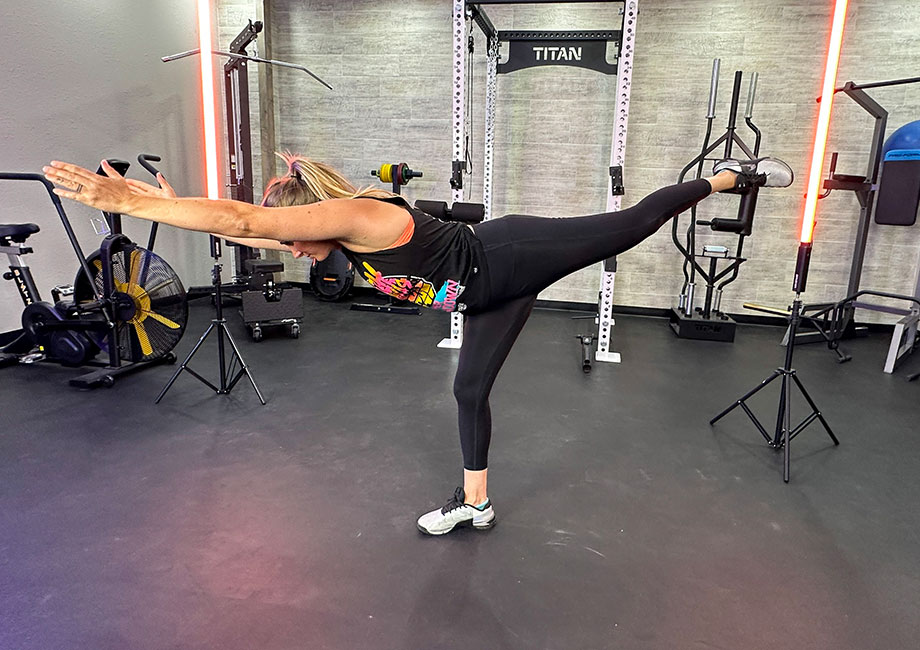
So, single-leg training is beneficial, but performing a deadlift one leg at a time compounds that upside by requiring you to stabilize your posture and complete the range of motion against resistance. Because of that, you get a little more bang for your buck.
Helps Correct Muscle Imbalances
“Standard bilateral movements work both sides simultaneously, but often, we favor one side and wind up with uneven growth,” says Kate. “Working one limb at a time using exercises like the single-leg deadlift helps address those deficits and correct imbalances.”
Correcting muscle imbalances is excellent for bodybuilders looking for symmetry in their physiques, but it’s crucial for preventing injuries that may result from strength deficits and imbalances.
Unilateral training is also integral for rehabbing an injured limb, allowing you more control over the load you’re subjecting it to after it has atrophied during recovery.
RELATED: Bodybuilding Home Gym
Common Single-Leg Deadlift Mistakes
You’ve checked out our single-leg deadlift guide and tutorial and fancy yourself a pro. Kudos to you for your dedication, but are you avoiding these common mistakes?
Starting Off-Center
Often, your ultimate success comes from a solid setup. Getting centered behind the barbell is paramount for the single-leg deadlift—and other single-leg exercises—because being even slightly to one side can shift your center of gravity and make you feel unwieldy.
“You want to stand with the barbell’s center directly in front of your front shin,” says Kate. “If it helps, turn the toes of your front foot outward slightly. Many people find this more comfortable.”
You’ll also want to firmly plant your working leg with the weight predominantly on your heel. Keep a firm base, move slowly, and take your time perfecting the technique with light weights before graduating to the heavy weights.
RELATED: Balance Exercises
Losing Control of the Concentric Phase
Sure, studies show4 that a lot of strength and hypertrophy gains occur during the eccentric phase of most exercises, but that doesn’t mean you should get to your peak position on the single-leg deadlift and just drop the weight.
“Controlling the concentric phase of the exercise maximizes your time under tension, resulting in greater muscle activation and more work per rep,” explains Kate. “Plus, you get to work to maintain your balance as you hinge forward again, improving your overall balance and coordination.”
Not Maintaining Neutral Alignment
Trainers and coaches worldwide advise maintaining a neutral neck and spine during most lifts because it helps reduce your risk of injury, whether you’re a weightlifting newbie, CrossFit Games hopeful, powerlifting pro, or Average Joe lifter.
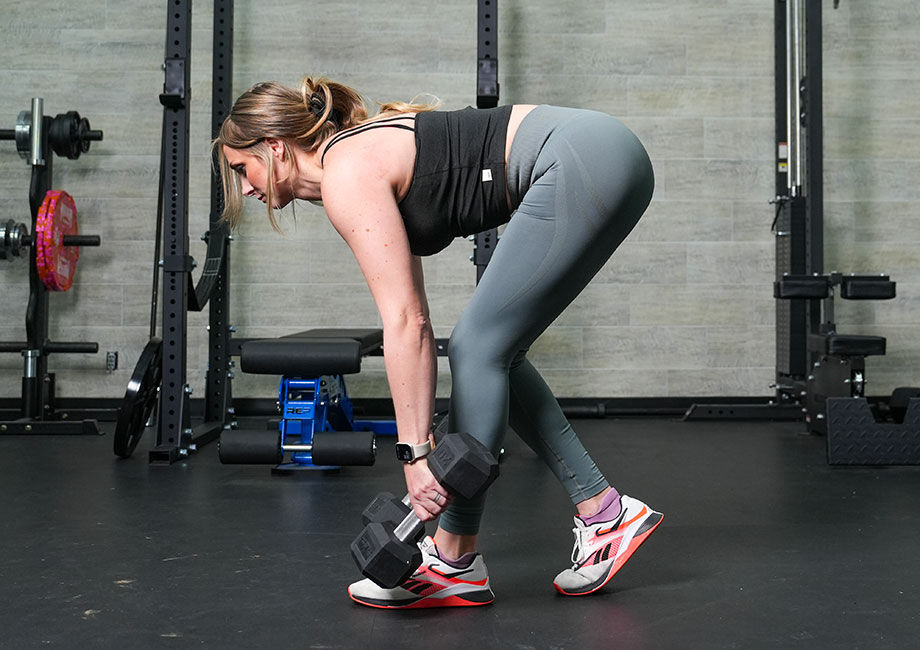
RELATED: Powerlifting Workout
“Keep your core braced, back straight, shoulders down and back, and eyes fixed forward as you move,” says Kate. “If you’re having trouble holding that strict posture, consider lifting lighter.”
So, you obviously don’t want to round your back and wind up compromising that alignment.
“Rounding the back during the single-leg deadlift most often occurs when you’re initially lifting the barbell from the floor or returning it to the floor,” says Kate. “As you fatigue, it becomes more and more difficult to brace the core, causing the back to round forward and compensate.”
Flatten your back and brace your core as you move through both the eccentric and concentric phases of the lift to avoid rounding your posterior.
On the flip side, arching your back can be equally disastrous.
“Arching the back during the single-leg deadlift usually occurs at the end of the lift in the peak position,” says Kate. “You’re excited and proud to have finished your rep, so you inadvertently exaggerate that upright posture and create an arch in the lumbar spine.”
It’s okay to be proud, but don’t let that form get away from you. Maintain your neutral position, including a tight core and flat back, from start to finish during every single-leg deadlift rep.
Going Too Heavy
The standard deadlift is one of the safer lifts to push your limits with since it’ll only come crashing to the floor in the event of a failed lift, but the single-leg version isn’t as forgiving.
“Going too heavy can compromise your good form,” says Kate, “and it can pull you forward, making it virtually impossible to keep your balance during the lift.”
So, don’t try to overdo things with the single-leg deadlift. Keep the weight challenging but manageable. If you’re having trouble identifying that sweet spot between “too heavy” and “just right,” consider working with a certified personal trainer or other qualified fitness professional.
RELATED: Best Online Personal Trainer
Muscles Worked by the Single-Leg Deadlift
The traditional deadlift is known to provide muscle activation throughout the entire body. While you’ll still receive ample activation from the single-leg variation, most occur in the lower body and posterior chain muscles.
- Glutes: Your glute muscles are mainly responsible for maintaining an upright torso and extending your hips—two things you need during the single-leg deadlift.
- Hamstrings: Your hammies sit on the back of your thighs and work to flex and extend your knee joint, meaning many lower-body movements can benefit from stronger hamstrings.
- Lower Back: Your lumbar spine doesn’t move during the single-leg deadlift, it remains isometrically contracted to stabilize and protect your spine.
- Core: The deadlift and single-leg deadlift aren’t core exercises, per se, but you’ll need a good degree of core stability to perform them safely and without injury.
RELATED: 10 Best Leg Exercises
Single-Leg Deadlift: Final Thoughts
The single-leg deadlift may seem simple enough, but we’re not here to pull your chain. Performing this powerful pulling movement on the reg helps increase muscle strength, size, and endurance, enhance balance, and improve coordination.
So, whether you’re a high-performance athlete looking to up your game or just a health-focused individual seeking to improve your general fitness and well-being, the single-leg deadlift is highly effective and deserves a spot in your lower-body routine.
Single-Leg Deadlift: FAQs
Is single-leg deadlift the same as RDL?
No, they’re not the same exercise. The SLDL involves lifting free weights from the floor while standing on one leg. The Romanian deadlift begins in the upright position, where you’ll hinge forward while holding free weights and shift the emphasis to your hamstrings.
You can perform a single-leg RDL, but you’ll perform the standard RDL with both feet on the floor.
How heavy should you single-leg deadlift?
Standard bilateral deadlifts often allow experienced lifters to rack plate after plate in pursuit of PRs, but the single-leg version doesn’t work the same way. Consider lifting less than half your regular deadlift one-rep max for safety.
That doesn’t mean that you can’t progress to a weight that’s both manageable and challenging. You just want those final few reps to be a struggle, not all of them.
Are single-leg deadlifts safer?
Yes and no. The single-leg deadlift places less stress on the lumbar spine, and lifters generally lift lighter weights, making it less likely you’ll throw out your back in the way you might when doing the regular deadlift.
That said, standing on one leg puts you at a greater risk of stumbling, toppling, or falling to the floor, which could also cause injury.
Both exercises are safe if you load responsibly and get in some good warm-up exercises before getting to your working sets.
References
- Collings TJ, Bourne MN, Barrett RS, et al. Gluteal Muscle Forces during Hip-Focused Injury Prevention and Rehabilitation Exercises. Med Sci Sports Exerc. 2023;55(4):650-660. doi:10.1249/MSS.0000000000003091
- Diamant W, Geisler S, Havers T, Knicker A. Comparison of EMG Activity between Single-Leg Deadlift and Conventional Bilateral Deadlift in Trained Amateur Athletes – An Empirical Analysis. Int J Exerc Sci. 2021;14(1):187-201. Published 2021 Apr 1.
- Marcori AJ, Monteiro PHM, Oliveira JA, Doumas M, Teixeira LA. Single Leg Balance Training: A Systematic Review. Percept Mot Skills. 2022;129(2):232-252. doi:10.1177/00315125211070104
- Douglas J, Pearson S, Ross A, McGuigan M. Chronic Adaptations to Eccentric Training: A Systematic Review. Sports Med. 2017;47(5):917-941. doi:10.1007/s40279-016-0628-4
Further reading

If you're looking into some of the most popular meal delivery services on the market, you may be wondering, "What's the difference between blue apron vs hello fresh vs home chef?" Find out here! Read more

Looking for a workout routine that’s been proven to give you strength and size? We’ve got you covered. This 5x5 workout program will do exactly that! Read more

In my Xero 360 shoes review, I’ll help you decide whether these zero-drop shoes are a good choice for you. Read more

After countless hours of testing these machines ourselves, we’ve developed a list of the best treadmills for home use. We weigh essential factors like price, performance, individual fitness goals, and unique features to determine which treadmills make the cut. Read more

